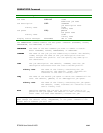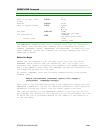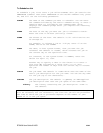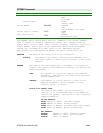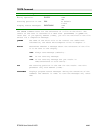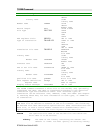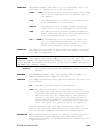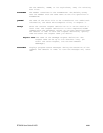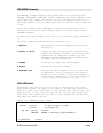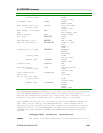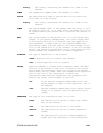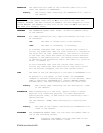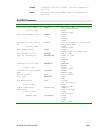
ETU400 User Guide 011603
10-50
TRANSLATE Determines whether the data is to be translated, and if so,
what type of translation is to be performed.
*TEXT or *YES The qualified file resides in ASCII Text format
and is to be translated for the AS/400. This is
the default.
*DIF The qualified file resides in DIF format and is
to be translated for the AS/400.
*BASICS The qualified file resides in BASIC Sequential
format and is to be translated for the AS/400.
*TAB The qualified file resides in BASIC Sequential
format with tab character field delimiters and
is to be translated for the AS/400.
*NO or *NONE No translation is to be performed. After the
file is transferred to the host, it will still
reside in the original ASCII format or in the
format that currently exists on the micro.
TRANSFILE The qualified file name of the translation table file to be
used when a translation is specified. The default translate
file name is TRANSLATE.
Mac Users: There are two files you can use. If you use the default file
(TRANSLATE), the member names have an M on the end of the name (for
example, ATOE1M). The Mac translation members are also shipped in a file
called MACTAB. The members in this file do not have the M at the end of
the name (for example, ATOE1).
Library The library containing the TRANSFILE. *LIBL is a the
default.
TRANSMBR The TRANSFILE member name. The default name is ATOE1, an
ASCII-to-EBCDIC table supplied with ETU.
TRUNCATE For *TEXT translations only: Specifies whether the text is to
be truncated.
*NO The data is folded (this is the default).
*YES The data is truncated, if necessary. To truncate
indicates that once the current host record is filled,
any additional data for that record as it resided on
the micro will be lost. Additionally, the record is
written to the host only after ETU reads an end-of-
record character sequence in the qualified file. The
end-of-record character is defined in the translation
table (see Table 8-1, position 40-41, in Chapter 8).
To fold indicates that once the current host record is
filled, any additional data existing for that micro record
will be written (wrapped) into the next AS/400 record..
FLDDEFFILE When transferring to a new file, specify a source physical
file containing either physical file data description
specifications (DDS), or an RPG source file containing F and
I specifications.



